|
 Antrodiella zonata Antrodiella zonata
SynonymsIrpex brevis
Irpex consors
Irpex zonatus
Radulum zealandicum
BiostatusPresent in region - Indigenous. Non endemic
Images (click to enlarge)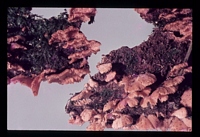
Owner: Herb PDD | 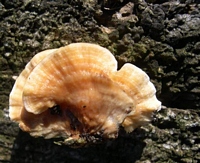
Owner: B. Dee | 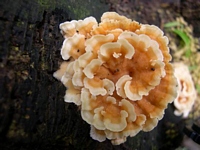
Owner: B. Dee | 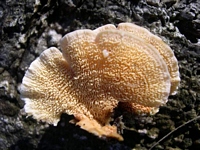
Owner: B. Dee | 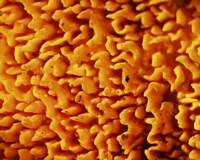
Owner: B. Dee | 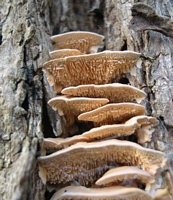
Owner: B. Dee | 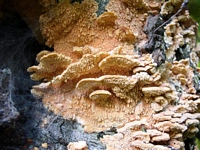
Owner: B. Dee | 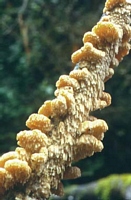
Caption: Antrodiella zonata
Owner: Kaimai Bush | 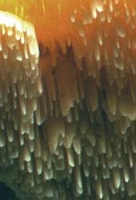
Caption: Antrodiella zonata
Owner: Kaimai Bush | 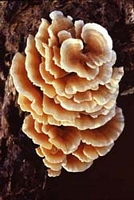
Caption: Antrodiella zonata
Owner: Kaimai Bush | 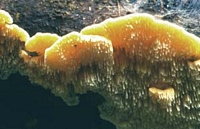
Caption: Antrodiella zonata
Owner: Kaimai Bush | 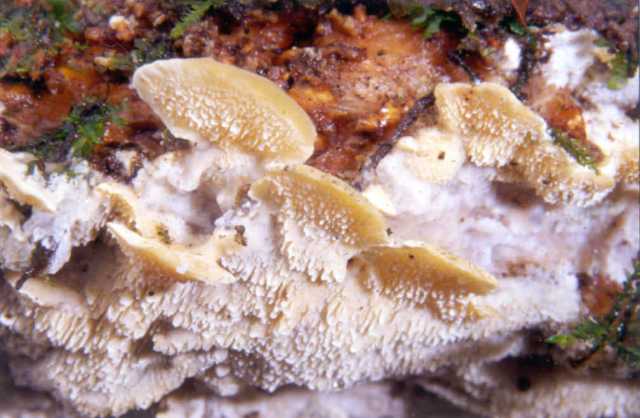
Caption: specimen RR NZ08
Owner: Richard Robinson | 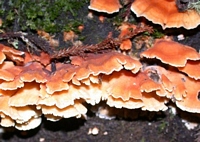
Caption: Antrodeilla zonata
Owner: Nils Hallenberg | 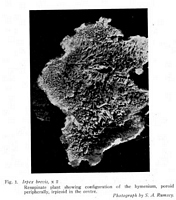
Caption: Fig. 1. x2. Irpex brevis. Resupinate plant showing configuration of the hymenaium, poroid peripherally, irpicoid in the centre. | 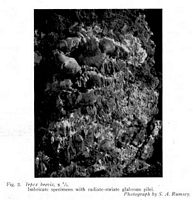
Caption: Fig. 2. Irpex brevis, x 3/2. Imbricate specimens with radiate-striate glabrous pilei. | 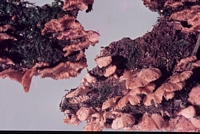
Owner: Herb. PDD | |
Article: Cunningham, G.H. (1949). New Zealand Polyporaceae. 11. The genus Irpex. New Zealand Department of Scientific and Industrial Research, Plant Diseases Division, Bulletin 82: 8 p.
Description: Hymenophore annual, caespitose, often imbricate, coriaceous. Pileus flabelliform, applanate,
effused-reflexed and dimidiate, sometimes spathulate, occasionally urceolate, frequently
resupinate, 7-30 mm. x 8-15 mm., x 1-2 mm.; surface wood colour, or ochraceous, with or
without concentric zones of darker colour, sometimes sulcate, commonly radiate-striate,
glabrouss, often polished, without a cuticle; margin acute, entire or lacerate, plane or
inturned; hymenial surface wood colour or pallid ochre, fertile to the edge, concolorous.
Context cream to ochre, to 1 mm. thick, compact, of parallel hyphae radiately arranged;
skeletal hyphae to 6 µ thick, lumen 1 µ, or almost obliterated, aseptate, unbranched, contents
staining; generative hyphae 2.5-3 µ thick, wall 0.5 µ, branched, septate, staining blue, with
clamp connections. Hymenium alveolar peripherally, elsewhere with flattened teeth irregular
in length and shape, 0.5-2 mm. long, apices bluntly pointed. Basidial type clavate, basidia
clavate, 12-16 x 4-6 µ. Cystidia abundant or sparse, but always present, clavate or fusiform,
to 40 x 8 µ, naked or crystal encrusted, staining; often encrusted setae are present in the
context and occasionally rounded apices of skeletal hyphae project beyond the basidia. Spores
elliptical, sometimes slightly allantoid, 4-4.5 x 1.5-2 µ, smooth, hyaline.
Habitat: HABITAT: Imbricate, sometimes resupinate, upon bark or decorticated fallen branches or
upright stumps.
Distribution: DISTRIBUTION: Australia; New Zealand.
Notes: Specific characters are the glabrous, often radiate-striate, sometimes zoned, ochraceous small pilei; small teeth with a border of shallow pores, dimitic hyphal system, abundant clamp connections, presence of cystidia, often crystal coated in the hymenium and/or context, and
small elliptical spores.
Lloyd (Myc.Notes, No. 45, p. 625, 1917) listed the species as a synonym of I. consors Berk., and gave as additional synonyms I. decurrens Berk. ex Cke. and probably Hydnum meruloides Kalch. One New Zealand collection from Weraroa he named I. consors. It is typically I. brevis, as ascertained by the author from examination of the type of the latter at
Kew. I. brevis antedates I. consors by twenty-two years so it is the valid name to employ;
though the author is unable at present to state if I. brevis and I. consors are names for the
same species.
|